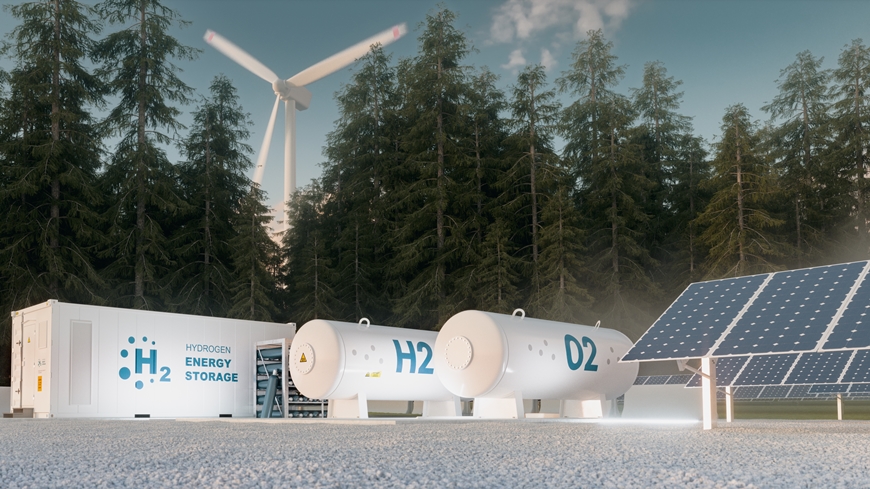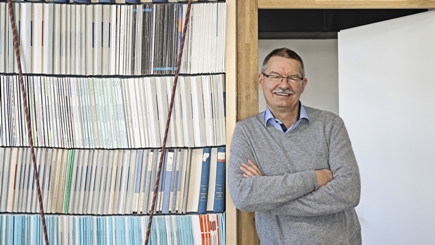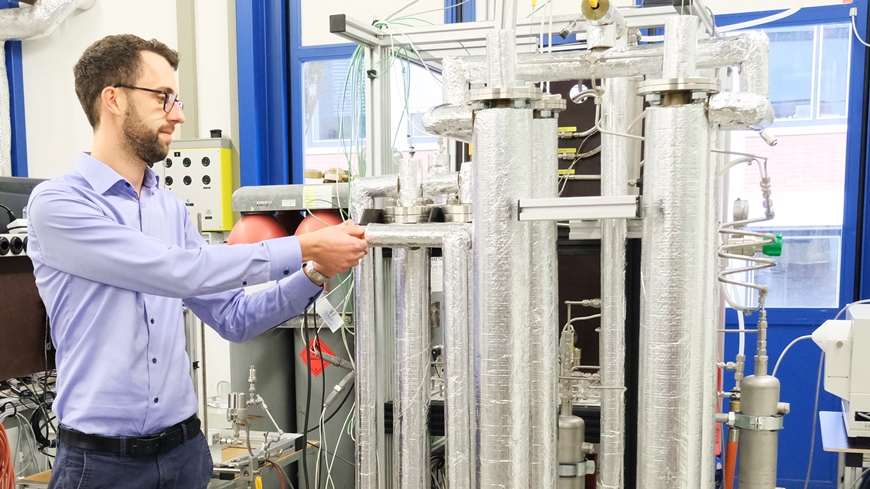Pathways out of the energy crisis
Where there's a will, there's a way
Climate crisis, energy shortage, nuclear phase-out. We need to transform our energy system. That much is clear. We also know that it will be anything but easy – and costly. But a lot is up to us, says Peter Richner, energy expert and Empa's deputy director. After all, many technologies are readily available, but have been (under)utilized thus far.

In the past decades, the permanent availability of cheap energy was taken for granted and was hardly ever questioned. Climate change on the one hand and the planned phase-out of nuclear energy on the other have triggered discussions about a transformation of our energy system, but the necessary measures have so far been implemented only half-heartedly.
In 2022, this situation changed dramatically. In Europe in particular – and thus also in Switzerland – there was a massive shortage of available energy. As a result of the Russian attack on Ukraine, gas supplies from Russia, which previously covered more than 30% of European demand, dried up almost completely. At the same time, only about 50% of France's nuclear power plants are currently online, as overhaul work fell behind schedule during the pandemic and, in addition, corrosion problems arose on pipelines, leading to more protracted investigations.
A tenfold increase in electricity prices – within one year!

The resulting energy shortage drove up prices massively, especially for gas and electricity. For a short time, electricity prices on the futures markets for the first quarter of 2023 of more than € 1,000 per MWh were asked for – a tenfold increase within one year! In order to bring supply and demand back into some kind of balance, the focus in the short term is on efficiency and energy savings measures. In the medium and long term, the aim is to make energy available from other sources, which must be renewable and have low CO2 emissions. Materials science and technology development, as conducted at Empa, forms the basis, on which practical answers to these challenges can be developed.
A profound transformation of our energy system within a few months or even years is hardly possible, even if, currently many of us would like this to happen. The construction of high alpine solar power plants and the associated adjustments to the power grid, the raising of dams of storage power plants and the switch to renewably produced hydrogen for industrial high-temperature applications involve enormous investments and cannot be implemented overnight. Therefore, we should currently focus primarily on efficiency and savings measures. The quickest and easiest way – at least in theory – is to implement behavioral changes; these are often purely a question of will. Lowering the room temperature in winter is the most obvious example, saving around 6-7% energy – per degree.
Artificial intelligence saves around a quarter of heating energy
However, voluntarily constraining oneself is difficult, but there are certainly ways to significantly reduce energy demand without noticeable losses in comfort or performance. Digitization, in particular, offers entirely new possibilities here. Felix Bünning and Benjamin Huber from Empa's Urban Energy Systems laboratory have developed a data-based control algorithm for regulating room temperature and put it through its paces in NEST. Using a temperature sensor, a room-specific computer model can be developed within two weeks, which is then used in combination with weather forecasts to control heating and cooling. This is done completely automatically via machine learning, without the need to know the physical parameters of a building. This technology can thus be implemented easily, quickly, and without technical modifications in numerous buildings. Compared to conventional heating control, energy consumption can be reduced by 20-30%, as a large-scale trial in one of Empa's office buildings in Dübendorf in winter 2021/22 showed. What's more, around 90% of employees said they had not noticed any loss of comfort. In the meantime, the two researchers have founded the start-up viboo and are full of verve to prove once again that "Empa – The Place where Innovation Starts" is far more than just a slogan.
If it pays off, it will be used
Quite a few other solutions are ready and waiting; their potential and feasibility have been demonstrated in the laboratory and in demonstration projects in recent years. However, they have not yet found their way onto the market – simply because they did not pay off at the previous process for energy and CO2. The NEST unit Solar Fitness and Wellness, for example, is equipped with an innovative energy concept that can reduce energy consumption of saunas and steam baths by a factor of three; and, in combination with storage technologies, it can be powered almost exclusively with solar energy. Only now, when hotels are suddenly confronted with tenfold higher electricity prices, is interest in this technology suddenly skyrocketing, and chances are good that implementation with partners from industry will become realistic.
The same applies to the widespread use of smart meters. Although the technology is well known and appropriate devices are available, Switzerland is taking its time with implementation; by 2027, 80% of all electricity meters are to be replaced by smart meters. These are a basic prerequisite for the integration of decentrally generated renewable energy and load balancing at low grid levels. This, in turn, enables significant efficiency gains at the neighborhood level, as research by Empa and its partners has shown in recent years. In the current situation of an uncertain power supply, the widespread installation of such smart meters would be a prerequisite to be able to control demand in a targeted manner in the event of a shortage by centrally controlling appliances whose operation is not time-critical, such as heating or boilers.
So there are many solutions ready and waiting to be implemented, paving the way for a climate-neutral, reliable and affordable energy supply. However, further efforts are needed to successfully follow the path all the way to the end. The focus is on solutions that allow energy to be stored for various periods of time and transported over long distances. New concepts for batteries based on non-critical raw materials and recycling concepts for high-performance batteries that are crucial for mobility are the focus of various research projects at Empa.
Energy self-sufficiency is utopian
Complete energy self-sufficiency for Switzerland makes neither economic nor technical sense. In addition to the domestic expansion of renewable energies, ways must therefore be found to import renewable energy, especially in winter. It is doubtful whether this will be possible from nearby countries, as our neighbors' energy systems are likely to develop in a very similar way to ours. In other places in the world, however, the potential for renewable energy production is huge, for instance in the desert regions of North Africa, the Middle East or in Patagonia and Australia. Transporting it over such long distances in the form of electricity is not feasible, though. The electricity generated from wind or the sun must first be converted into chemical energy carriers such as hydrogen, ammonia or synthetic hydrocarbons. This makes energy storable and transportable at the same time. New catalysts and catalytic processes are essential to make the chemical conversion processes as efficient as possible and to produce energy carriers that provide the greatest possible benefit, for example as a substitute for (fossil) kerosene. In all these innovative approaches, their greenhouse gas balance is key. This should be net zero or – ideally – even CO2-negative, i.e. reduce the greenhouse gas concentration in the Earth's atmosphere.
Thanks to its expertise in materials science and technology development, Empa will continue to develop new solutions that will make it possible to put our energy system on a sustainable footing. However, we as a society must muster the necessary will and the corresponding seriousness to successfully master this challenging path together.
Dr. Peter Richner
Civil and Mechanical Engineering
Phone +41 58 765 4140
peter.richner@empa.ch
Communication
Phone +41 58 765 4592
michael.hagmann@empa.ch
-
Share

|
Best of both worlds |
|
Lorenz Herrmann has been head of Empa's Advanced Materials and Surfaces Department for around six months. In an interview, he talks about novel materials – and how research at Empa differs from that at an industrial research center. |
|
Synthetic methane |
|
Synthetic energy carriers are carbon-neutral and make renewable energy transportable and storable. But the production involves rather high energy losses. Empa researchers have developed a new reactor concept for methanation. |








